13 Most Common Lawn Weeds in Ohio (And How To Control Them)
BY ABDUL WADOOD | MAY 22ND, 2023 | LAWN CARE, OHIOWeeds are a nuisance that can wreck the lawn you’ve spent so much time cultivating. Identifying the weeds is half the battle; knowing how to deal with them is the other half. This guide on common lawn weeds in Ohio helps you accomplish both.
In this article:
- How Weeds Harm Your Ohio Lawn?
- Hand Weeding vs. Herbicides
- 13 Most Common Lawn Weeds
- FAQs
- The Final Word
How Weeds Harm Your Ohio Lawn?
Weeds steal water, air, and nutrients from your grass and desirable plants. If there are weeds on your lawn when you fertilize them, they will quickly soak the nutrients, leaving your grass weak and prone to diseases and pests.
Weeds spread quicker than you’d imagine. So, take immediate action when you spot them. Weeds love low-nitrogen soils and thinning grass. With routine lawn maintenance, you can keep weeds under check.
Hand Weeding vs. Herbicides
You can kill weeds with the good old hand-pulling technique and herbicides.
Hand Weeding
If you have only a few weeds, it’s best to get rid of them by hand weeding. When pulling a weed, make sure to remove it entirely with the roots. Also, don’t forget to wear gloves, as many weeds cause skin irritation.
Weeds like dandelions have a taproot system, which can be hard to remove. You can use a dandelion fork or screwdriver to pry them loose.
Herbicides
Pre-emergent herbicides
If you want to control weeds before they germinate, using pre-emergent herbicides is the only way. They kill the infant root system, preventing the weeds from growing. Early spring is the best time to apply pre-emergent herbicides.
Pre-emergent herbicides are available in both granular and liquid forms.
Post-emergent herbicides
If the weeds have already started to show up and there are too many of them to pluck by hand, use post-emergent herbicides. The weeds absorb the herbicide and die as the chemical travels down the root system. Post-emergent herbicides come in granular and liquid forms.
The best time to apply post-emergents is when the weed is actively growing, usually during the spring.
Note: Avoid spraying herbicides on a windy day to prevent harming other ornamental plants.
13 Most Common Lawn Weeds in Ohio
1. Dandelion (Taraxacum Officinale)
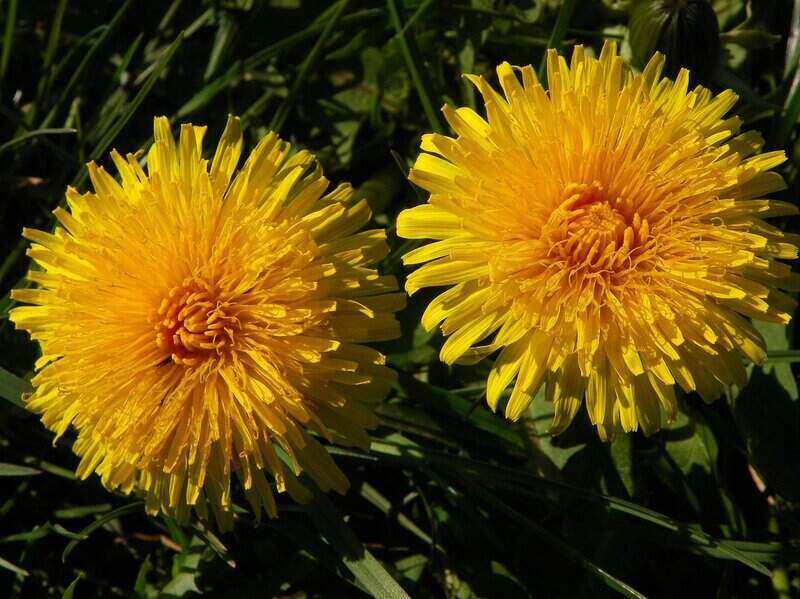
Photo Credit: AnemoneProjectors / Wikimedia Commons / CC BY-SA 2.0
Dandelions look good and actually have many medicinal benefits. But they’re invasive and can take over your lawn in no time. Dandelions usually start growing during spring, producing bright yellow ray flowers. These flowers mature into fluffy, white seeds that disperse by the wind.
You can apply pre-emergent herbicides during early spring to prevent dandelions from germinating. This weed has a strong taproot, penetrating the soil up to 18 inches. Removing it by hand is very difficult, so we recommend using post-emergent herbicides.
Life cycle: Perennial
USDA hardiness zone: 3 to 10
Growing condition: Full sun to partial shade; well-drained soil
Possible hazards: Low
Removal method: Pre-emergent herbicide (prodiamine), post-emergent herbicide (triclopyr)
2. Spotted Spurge (Trifolium Repens)
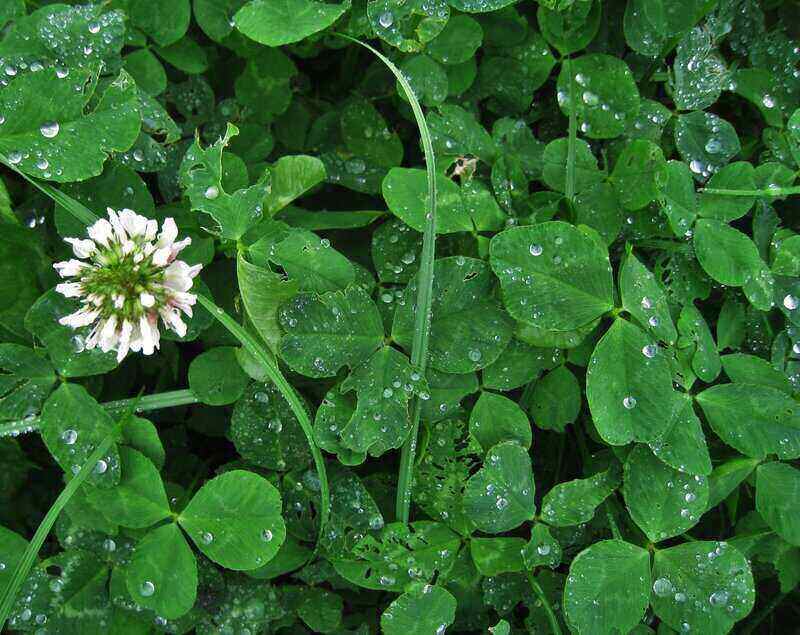
Photo Credit: PxFuel
Spotted spurge is a low-growing, short-lived annual broadleaf plant with a mat-like growth habit. The stems of this plant choke desirable grasses. So, it’s not something you want to have on your lawn.
Spotted spurge has a long taproot, making it difficult to remove manually. So, using herbicides is a more practical option. Spurge usually affects thinning grass. With proper fertilization, irrigation, and mowing, you can prevent this weed altogether.
Life cycle: Annual
USDA hardiness zone: 3 to 9
Growing condition: Full sun; dry, compacted soil
Possible hazards: Low
Removal method: Pre-emergent (pendimethalin), post-emergent (triclopyr), hand removal
3. Black Medic (Medicago Lupulina)
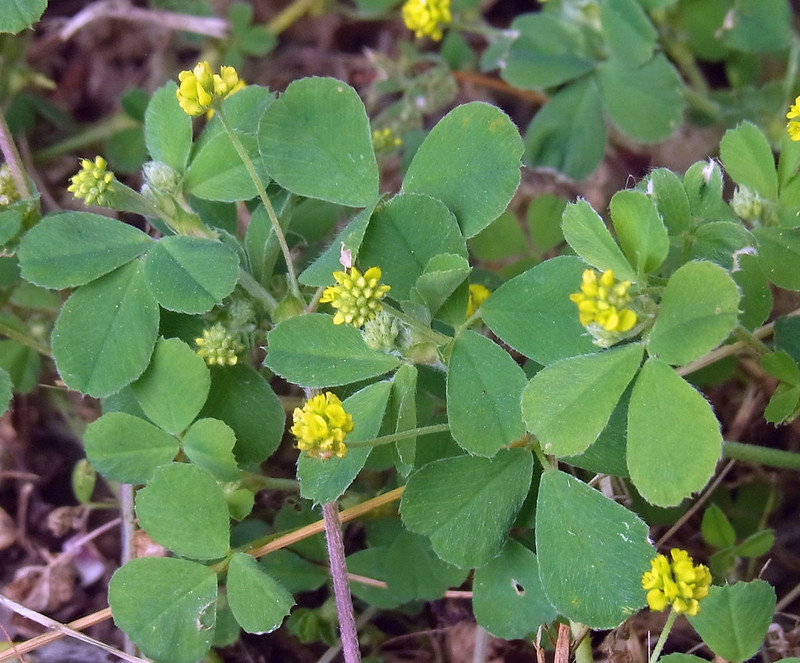
Photo Credit: Lawn Weeds / Flickr / CC BY 2.0
Black medic is a low-growing, short-lived perennial that produces small yellow flowers in clover-like clusters. It’s hairy, particularly the stems. The oval-shaped leaves grow in groups of three. Hand weeding works well for removing black medic as it grows from a central location.
Black medic only affects compacted soil, so if you spot this weed in your lawn, it indicates that your grass needs aeration.
Life cycle: Annual, short-lived perennial
USDA hardiness zone: 4-8
Growing condition: Full sun to partial shade; well-drained fertile soil
Possible hazards: Low
Removal method: Hand removal
4. Japanese Knotweed (Reynoutria Japonica)
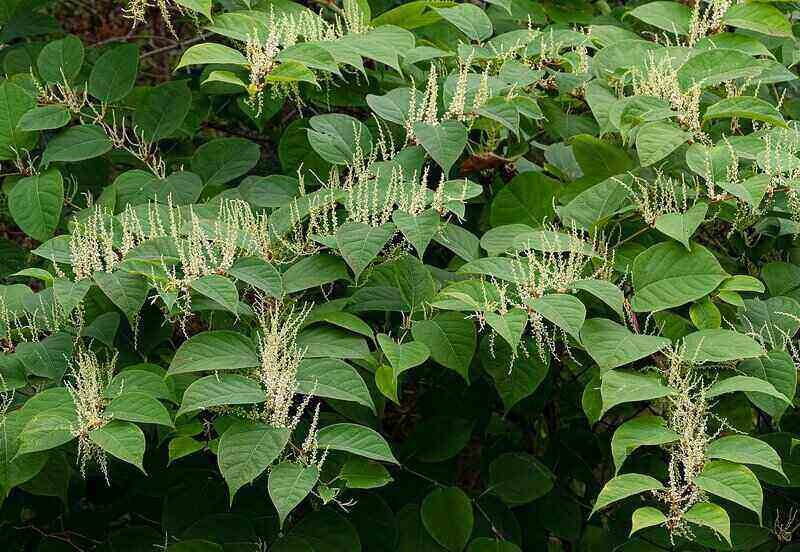
Photo Credit: W.carter / Wikimedia Commons / CC0
Japanese knotweed spreads quickly and grows fast. It reaches up to 15 feet in height, suppressing the growth of your turf grass and other plants. Removing Japanese knotweed by hand is next to impossible. In fact, even with herbicides, it takes about three years to eliminate Japanese knotweed.
Japanese knotweed starts growing during summer. Applying pre-emergent herbicides in early spring can prevent it from germinating.
Life cycle: Perennial
USDA hardiness zone: 4 to 10
Growing condition: Full sun to partial shade; well-drained soil
Possible hazards: Low
Removal method: Pre-emergent (prodiamine), post-emergent (glyphosate), hand removal
5. Common Yellow Woodsorrel (Oxalis Stricta)
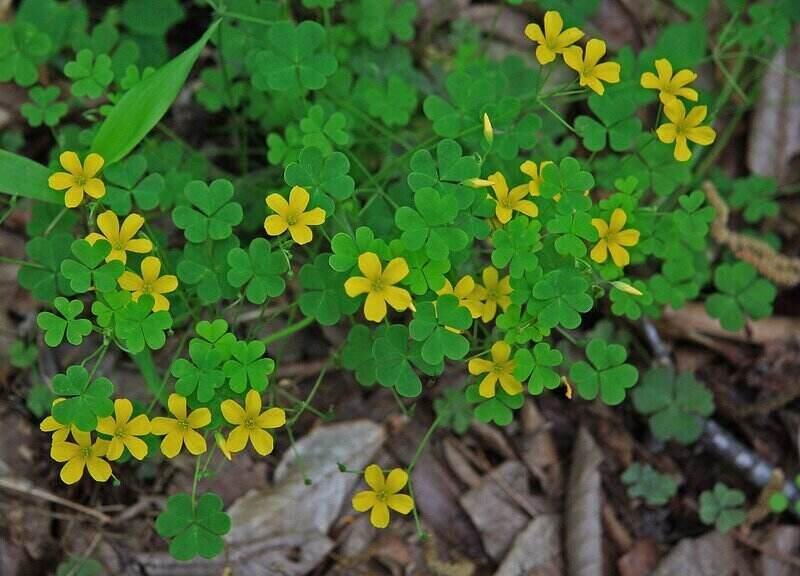
Photo Credit: Dcrjsr / Wikimedia Commons / CC BY 3.0
Common yellow woodsorrel has clover-shaped leaves that remain open during the day and fold at night. It blooms from mid-spring to fall, producing small, five-petaled yellow flowers. Common yellow woodsorrel grows best in partial shade and moist soil but is highly adaptable and can withstand various conditions.
Common yellow woodsorrel can be removed manually or using post-emergent herbicides that contain triclopyr. Late spring is the best time to use these herbicides as the weed will still be small.
Life cycle: Perennial
USDA hardiness zone: 5 to 11
Growing condition: Full sun, partial shade, full shade; moist, well-drained soil
Possible hazards: Low
Removal method: Pre-emergent (dacthal), post-emergent (triclopyr), hand removal
6. Buckhorn Plantain (Plantago Lanceolata)
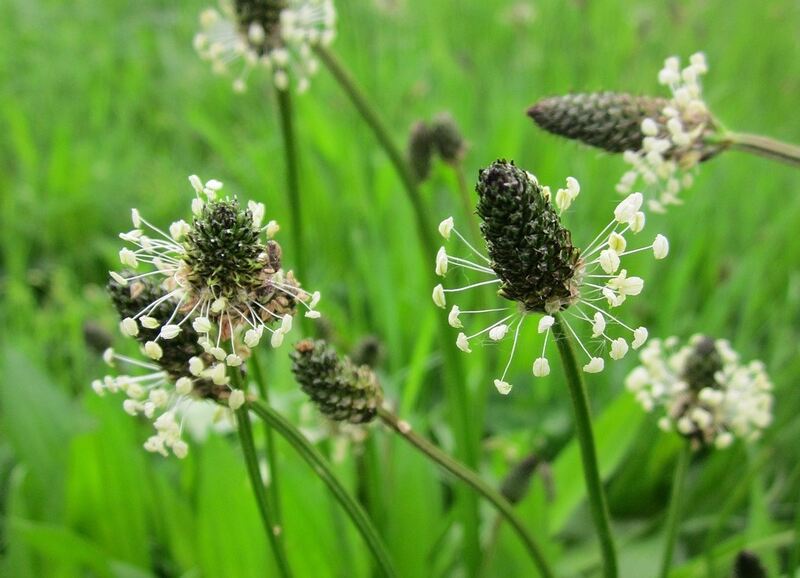
Photo Credit: Pixabay
Buckhorn plantain is easy to identify from its narrow, lance-like leaves and tall flower stalks. It usually grows in compacted soil and poorly irrigated lawns. Aerating your lawn and correctly watering it can help prevent this weed from growing.
Like some of the other weeds on this list, buckhorn plantain has a taproot system, making it difficult to remove with your hands. However, many herbicides effectively work against this weed.
Fun fact: Buckhorn plantain can reduce the pain of insect stings because it contains antiseptic alkaloids.
Life cycle: Perennial
USDA hardiness zone: 5 to 9
Growing condition: Full sun to partial shade; sandy, dry, low fertility soil
Possible hazards: Low
Removal method: Post-emergent herbicide (glyphosate)
7. White Clover (Trifolium Repens)
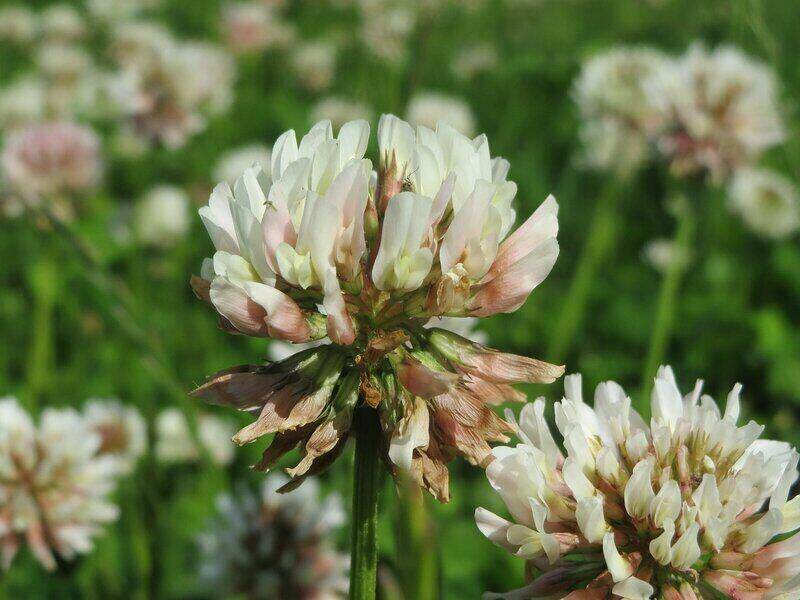
Photo Credit: Pixabay
White clover is an attractive broadleaf perennial that blooms from mid-spring to late summer, producing small, white flowers that bees love. It also has many benefits. However, white clover is invasive and can quickly take over your lawn.
White clover usually grows in areas with partial shade, but you can also find it in sunny spots. You can use post-emergent herbicides to get rid of this weed or remove it manually.
Life cycle: Perennial
USDA hardiness zone: 3 to 10
Growing condition: Partial shade; moist, well-drained soil
Possible hazards: Moderate
Removal method: Pre-emergent (isoxaben), post-emergent (2,4-D), hand removal
8. Ground-Ivy (Glechoma Hederacea)
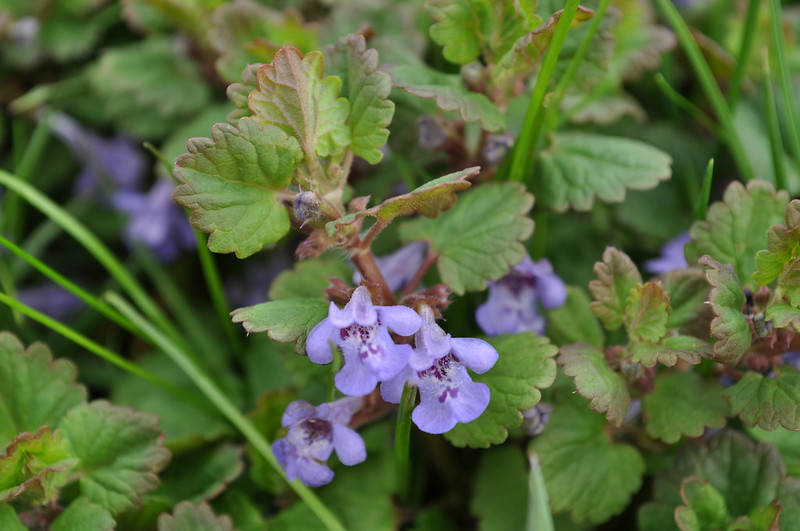
Photo Credit: NY State IPM Program / Flickr / CC BY 2.0
Ground-ivy, otherwise known as creeping Charlie, spreads vigorously, choking your grass and ornamental plants. It has aromatic, fan-shaped leaves with scalloped edges. It also features funnel-shaped, purplish flowers near the tip.
If ground-ivy is affecting only part of your lawn, it’s best to remove it manually. You can use post-emergent herbicides if there are too many of them. Also, don’t forget to apply pre-emergent herbicides in the upcoming spring to prevent this pesky invader from coming back.
Life cycle: Perennial
USDA hardiness zone: 3 to 10
Growing condition: Partial to full shade; damp, clay soil with good fertility
Possible hazards: Low
Removal method: Pre-emergent (dacthal), post-emergent (triclopyr), hand removal
9. Chickweed (Stellaria Media)
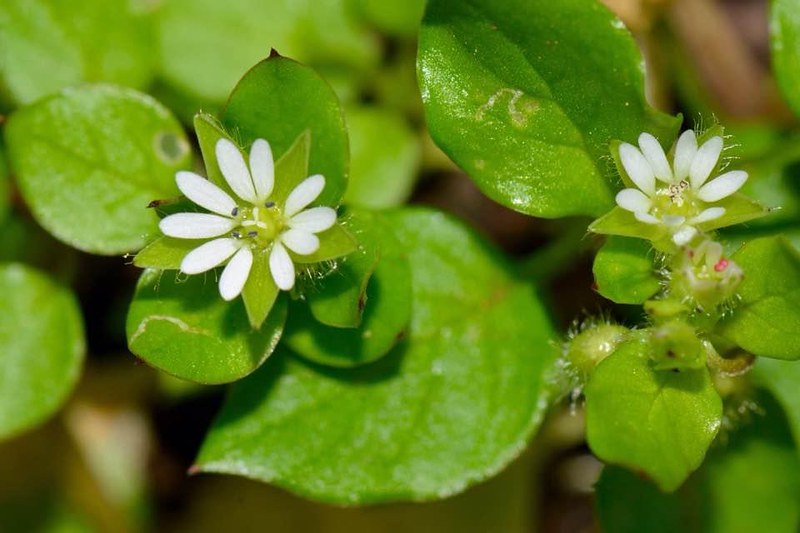
Photo Credit: Jean and Fred Hort / Flickr / CC BY 2.0
Chickweed is a low-growing perennial that produces star-shaped, white flowers during spring. This weed affects compacted soil, so, aerating your lawn at the correct intervals can prevent chickweed from sprouting.
Chickweed is hard to get rid of completely. You can remove it manually along with the roots and apply pre-emergent herbicides in spring to prevent it from returning.
Life cycle: Annual, short-lived perennial
USDA hardiness zone: 4 to 11
Growing condition: Full sun, partial shade, full shade; rich, moist, compacted soil
Possible hazards: Moderate
Removal method: Post-emergent (glyphosate), hand removal
10. Common Crabgrass (Digitaria Sanguinalis)
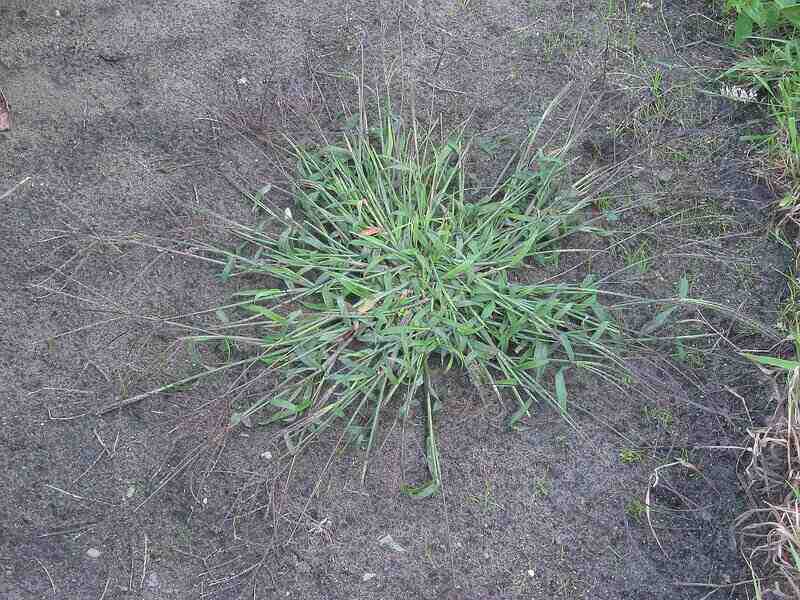
Photo Credit: Rasbak / Wikimedia Commons / CC BY-SA 3.0
Crabgrass is among the most common weeds in Ohio. Many homeowners mistake it for their grass, especially fescues, but it is thicker and a darker green.
Crabgrass only spreads by seeds and not rhizomes. So using pre-emergent herbicides prevents the seeds from germinating. If crabgrass is already growing, remove it by hand or use post-emergent herbicides.
Life cycle: Annual
USDA hardiness zone: 6 to 9
Growing condition: Full sun to partial shade; moist, well-drained soil
Possible hazards: Low
Removal method: Hand removal
11. Bull Thistle (Cirsium Vulgare)
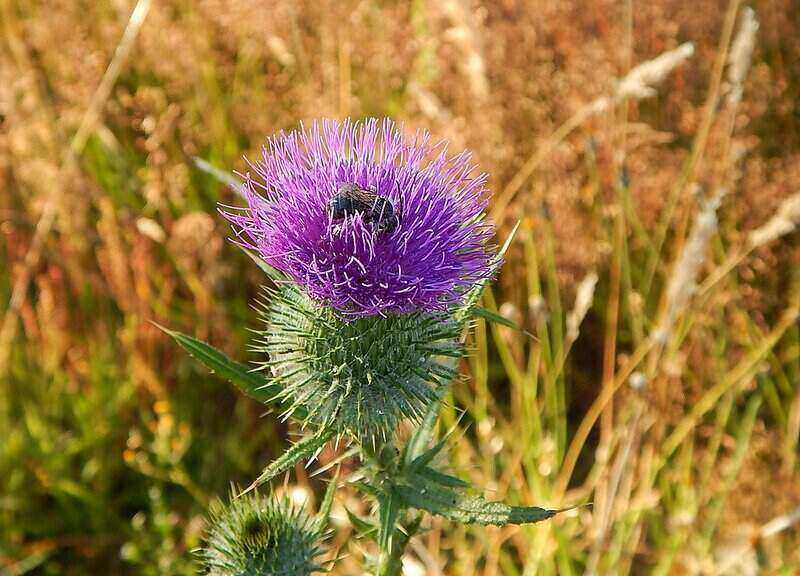
Photo Credit: Ron Clausen / Wikimedia Commons / CC BY-SA 4.0
Bull thistle is a fast-growing perennial weed that thrives in moderately moist soil. It flowers from early summer to fall, producing bright pink flowers. The leaves have long, sharp spines, so be cautious when removing this weed manually.
You can use post-emergent herbicides after bull thistle flowers to eradicate it. Also, it’s easy to prevent this weed from spreading as it doesn’t have rhizomes.
Life cycle: Biennial
USDA hardiness zone: 2 to 9
Growing condition: Full sun; moderately moist, nitrogen-rich soil
Possible hazards: Low
Removal method: Post-emergent (glyphosate)
12. Slender Speedwell (Veronica Filiformis)
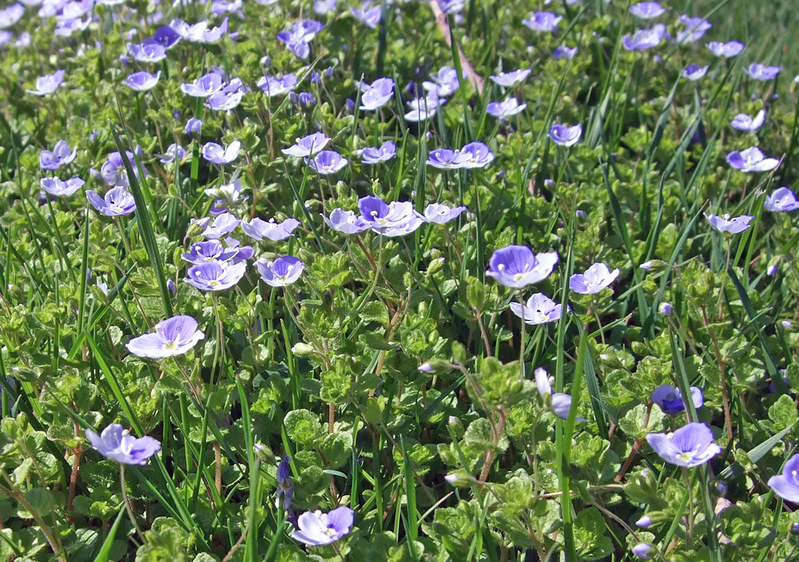
Photo Credit: Simon / Flickr / CC BY 2.0
Slender speedwell is a low-growing plant with a mat-like growth habit. You can identify it with its small, kidney-shaped leaves and lilac blue four-petal flowers that appear during spring. Slender speedwell may look beautiful, but it spreads very fast. You can remove it manually or use herbicides.
Slender speedwell usually attacks weak turf. So, with proper fertilization, aeration, and mowing, you can prevent this pesky invader from returning. Don’t forget to use pre-emergents during early spring.
Life cycle: Perennial
USDA hardiness zone: 3 to 9
Growing condition: Full sun to partial shade; moist, well-drained soil
Possible hazards: Low
Removal method: Pre-emergent (dithiopyr), post-emergent (2,4-D), hand removal
13. Common Purslane (Portulaca Oleracea)
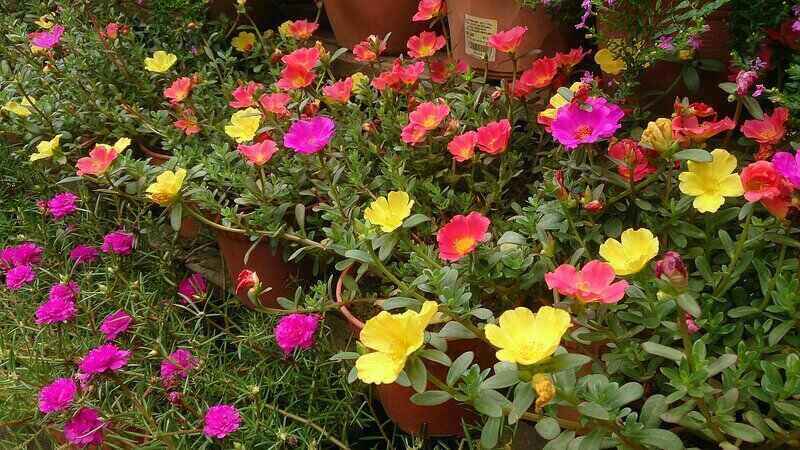
Photo Credit: Mokkie / Wikimedia Commons / CC BY-SA 3.0
Common purslane is a low-growing plant with red multi-branched stems and succulent leaves. It has a mat-like growth habit and produces small, star-shaped yellow flowers with five petals.
Common purslane has a long taproot system, so hand-weeding can be difficult yet effective. You can also use post-emergent herbicides with dicamba to eliminate common purslane. To prevent this weed from coming back, apply pre-emergent herbicides with dithiopyr.
Life cycle: Annual
USDA hardiness zone: 5 to 10
Growing condition: Full sun; well-drained soil
Possible hazards: Low
Removal method: Pre-emergent (dithiopyr), post-emergent (dicamba), hand removal
FAQs
It’s nearly impossible to achieve a weed-free lawn. But, with proper maintenance and by applying pre-emergent herbicides, you can prevent weeds from germinating to a great extent.
Preventing weeds altogether is next to impossible as they are inevitable. But here are some tips to achieve an almost weed-free lawn.
• Test your soil and fertilize your lawn with the nutrients it needs.
• Apply a thick layer of organic mulch around your flower bed. Mulch deprives weeds of light, preventing these pesky invaders from germinating.
• Apply pre-emergent herbicides in early spring.
• Weeds love the sun, so grow ornamental plants close together to crowd out weeds.
• If you notice a weed, pull it out from its root to prevent it from spreading.
Selective herbicides work against a particular weed. Non-selective herbicides work against many weeds. But they can also harm beneficial plants. So, use them with caution.
The Final Word
No one likes weeds. If you want to prevent these pesky invaders from growing on your lawn, routine lawn maintenance is a must. Also, when you spot a weed, remove it immediately to stop spreading.
If you need help eliminating the weeds taking over your beautiful lawn, call Wikilawn Ohio lawn care pros. We can also help you with your routine lawn maintenance.
Main Photo By: Joost J. Bakker IJmuiden / Flickr / CC BY 2.0